John Purroy Mitchel Memorial Flagstaffs
Introduction
Text-to-speech Audio
Images
Bronze flagstaff base
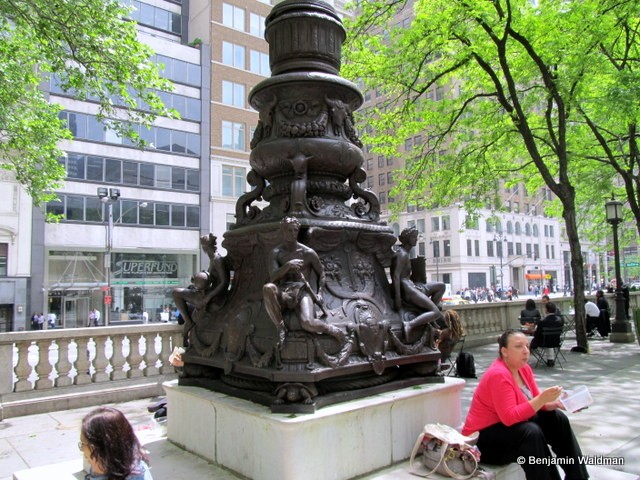
John Purroy Mitchel
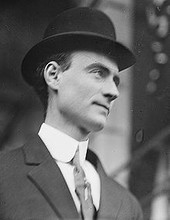
John Purroy Mitchel, 1914
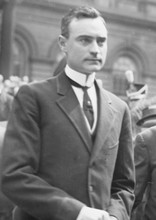
Mitchel reviewing the 30th NY Volunteer Infantry, 1915
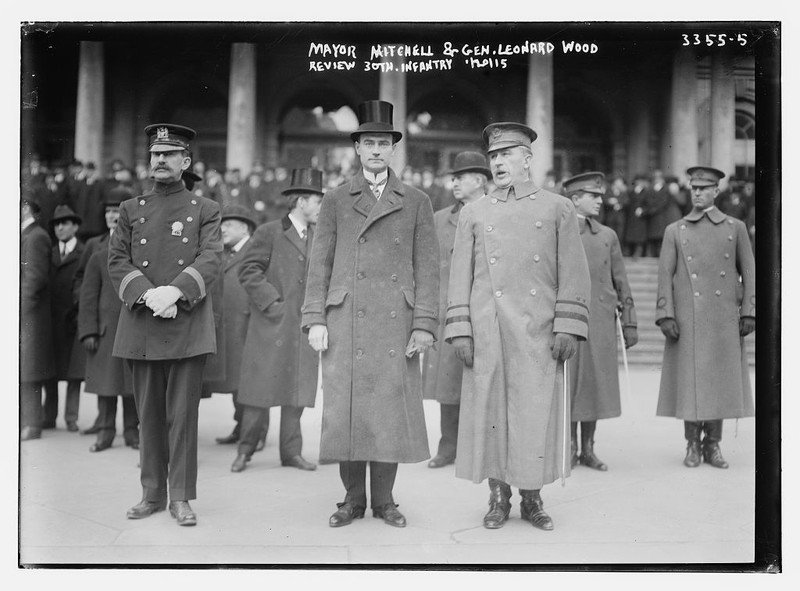
Michel in uniform
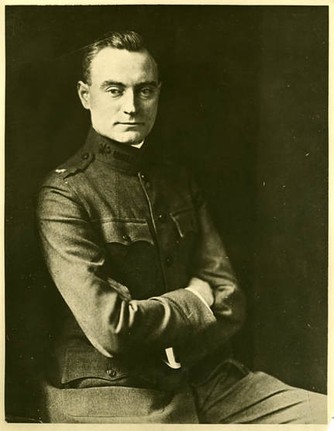
Mitchel achieved the rank of Major during his training
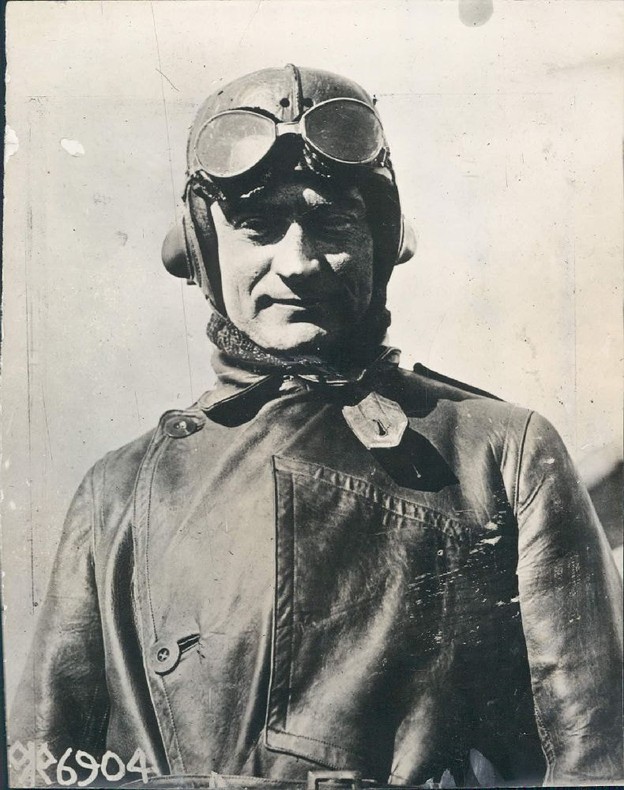
Mitchel's grave at Woodlawn Cemetery
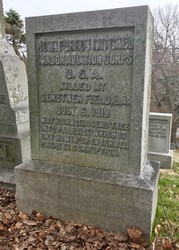
Photograph from Mitchel's funeral
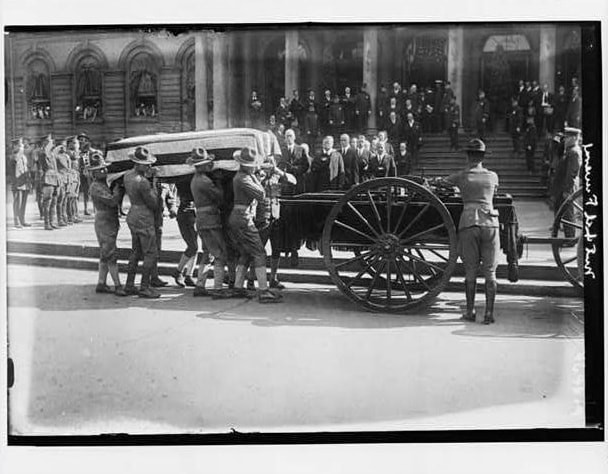
Backstory and Context
Text-to-speech Audio
John Purroy Mitchel was born at Fordham, NY on July 19, 1879. He grew up in an affluent Irish Catholic family that was connected to New York City politics and the fire department. His grandfather was a famous Irish nationalist. Mitchel attended St. John’s College from 1891 to 1894, Columbia College (Class of 1899), and then received a law degree from New York Law School in 1902. He began working as a lawyer in New York and did a short stint looking for diamonds in British Guiana for a client. In 1906 New York City corporation counsel William B. Ellison hired Mitchel to investigate Borough President of Manhattan John F. Ahearn; Ellison was a family friend to Mitchel and he needed a relatively unknown lawyer to start looking into incompetence connected to Tammany Hall politicians. His investigation into Ahearn and subsequent investigations into other city departments revealed wasteful spending and cost several officials their positions.
It was his work investigating corruption in New York City departments that brought Mitchel into the public eye and allied him with anti-Tammany Hall politics. This is somewhat interesting since Tammany Hall was strongly connected to the Irish Catholic community and Mitchel spend his political career opposing Tammany Hall. Unlike other Irish politicians that retained their cultural identities and used that in their politics, Mitchel wanted to rise above Irish politics and claim to be 100% American. He chose to take on a different social identity and prove that the Irish were the same as white American Yankees.
His work with the Commissioners of Accounts investigating waste and inefficiency in city departments pushed him into the political spotlight and he was nominated for the position of President of the Board of Alderman in 1909. Mitchel did not want the position and tried to withdraw his name from the nomination, but he was kept on the ballot and was elected to the second highest position in New York City. During his time on the Board of Alderman he enacted reforms to cut wasteful spending and advocated for a municipal transportation system. After his term Mitchel was appointed as Collector of the Port but was only in the position for a couple of months before he was nominated for mayor in the 1913 campaign. He won the election as a Republican against the Tammany Hall Democratic candidate. Only 34, John Purroy Mitchel was New York City’s second youngest mayor and was often called the “Boy Mayor of New York.”
Mitchel was elected to the mayorship because of his commitment to reform and rejection of political or economic influences. He focused on keeping his administration honest, eliminating corruption from city offices, and instituting municipal reforms. He was determined to do the best job possible, without engaging in the “business” of politics that he found distasteful. This made him a good mayor and reformer, and he was very popular initially. However, his distaste for the political machine prevented him from making the connections that would keep him in office and some of his reforms quickly alienated certain ethnic and interest groups. One famous reform case during his term as mayor was an investigation into orphanages receiving city funds. His administration found 26 charities, 12 of them Catholic, showing irregularities in their spending and declared them deficient. This report then led to an investigation of the state board that oversaw these charities. These investigations and subsequent reforms angered many New York Catholics against Mitchel; they saw it as an attack against Catholic institutions, not reforms of wasteful spending, made worse because of Mitchel’s own Catholicism. Even more widespread was the controversy over his educational reforms. Mitchel’s determination to cut spending became an issue when dealing with overcrowded city schools and demands from educators for more funding and resources. He advocated a “pay-as-you-go” policy for any expenditures that were not capital producing, such as schools, so the city would only pay for what they had the current revenue to support. To address the crowded school system, Mitchel advocated for Progressive education that would educate students both inside and outside the classroom, allowing for more efficient use of classroom space and more than one student filling each seat (based on the Gary Plan). Mitchel’s education policies were highly unpopular with teachers and parents, and Tammany Hall politicians were able to run an effective opposition campaign against his plans for Progressive education.
Mitchel had won the 1913 election with large numbers, but he was unable to repeat that in the 1917 campaign. While he was respected for his commitment to eliminate corruption and make New York City a better place, he was simply bad at “being a politician.” Fellow politician Al Smith said of Mitchel: “Mitchel had a large and powerful independent following. He was a man of unquestionable ability. He brought about many desirable reforms in the administration of city business, but the loose cog in the wheel happened to be the fact that he held a political position and was a thousand miles away from being a politician.” He was aloof from his constituency and his refusal to make any political connections (to avoid favoritism or influence) meant that he did not have the connections to work towards his reelection. In addition, many of his reforms had alienated certain ethnic or interest groups. His brand of patriotism that focused on being 100% white American denounced even his fellow Irish, which strengthened Tammany Hall’s ability to beat him in the 1917 election. Mitchel’s victory in 1913 had led many to believe that the power of Tammany Hall would finally diminish, but his defeat in 1917 was a rejuvenation of the Hall who would win the next four mayoral races. His defeat also signaled the end of Progressive reform in New York City.
Mitchel decided that if he did not win reelection in the 1917 campaign that he would join the military to fight in WWI. He tried to get a commission in the Army but met with roadblocks possibly related to his political career. Instead, he was offered a commission in the Air Corps where he could go over to France after a period of training. Mitchel was not keen on flying, but he took the commission as a way to get into the fighting overseas. He left New York for several months of training in San Diego, CA. In June 1918 he was transferred to Gerstner Field in Louisiana for training in advanced flying. On July 6, 1918 as Mitchel participated in a training flight his plane circled the field once and then started to dive. Mitchel was catapulted out of the plane and killed on impact when he landed. The investigation into the accident found that his safety belt had not been fastened and this resulted in his death.
The reaction to Mitchel’s death was substantial in New York City. Mitchel’s widow accompanied the body from Gerstner Field to New York City for burial. When Mitchel lay in state at City Hall newspapers estimated that 30,000 people come through for the viewing and more kept coming even after the body had been removed for the funeral. His funeral was supposed to take place at the Church of St. Francis Xavier where he had a pew. However, the response was so large that officials had to move the funeral to St. Patrick’s Cathedral for more space. He was buried at Woodlawn Cemetery on July 11, 1918. His friends and those who had served in his administration formed the Mitchel Commissioner and Associates and each year they would gather at his grave on July 19 (his birthday) for a memorial service.
There are other memorials to John Purroy Mitchel in New York City, in addition to the flag poles at the New York Public Library. The Columbia University Class of 1899 had a tablet sculpted representing Mitchel in a camp chair which they presented during Alumni Day in 1921. The 1921 event was dedicated to Columbia men who had died in WWI and had a special focus on Mitchel. The plaque is at the entrance of Hamilton Hall. A second memorial to Mitchel was unveiled in 1928 at the Fifth Avenue & 90th Street entrance of Central Park.
Sources
Lewinson, Edwin R. John Purroy Mitchel: The Boy Mayor of New York. New York: Astra Books, 1965.
McClymer, John F. “Of ‘Mornin’ Glories’ and ‘Fine Old Oaks’” John Purroy Mitchel, Al Smith, and Reform as an Expression of Irish-American Aspiration.” In The New York Irish, edited by Ronald H. Bayor and Timothy J. Meagher, 374-394. Baltimore: The Johns Hopkins University Press, 1996.
Waldman, Benjamin. “The John Purroy Mitchel Memorial Flagstaffs at the NYPL.” Untapped New York. January 10, 2012. Accessed November 16, 2020. https://untappedcities.com/2012/01/10/the-john-purroy-mitchel-memorial-flagstaffs/.
Waldman, Benjamin. “The John Purroy Mitchel Memorial Flagstaffs at the NYPL.” Untapped New York. January 10, 2012. Accessed November 16, 2020. https://untappedcities.com/2012/01/10/the-john-purroy-mitchel-memorial-flagstaffs/.
"John Purroy Mitchell." Wikipedia. Accessed November 17, 2020. https://en.wikipedia.org/wiki/John_Purroy_Mitchel.
"John Purroy Mitchell." Wikipedia. Accessed November 17, 2020. https://en.wikipedia.org/wiki/John_Purroy_Mitchel.
"John Purroy Mitchell." Wikipedia. Accessed November 17, 2020. https://en.wikipedia.org/wiki/John_Purroy_Mitchel.
"John Purroy Mitchel." Mitchel Field. Accessed November 17, 2020. https://mitchelfield.weebly.com/john-purroy-mitchel.html.
"John Purroy Mitchel." Mitchel Field. Accessed November 17, 2020. https://mitchelfield.weebly.com/john-purroy-mitchel.html.
"John Purroy Mitchel." Find A Grave. Accessed November 17, 2020. https://www.findagrave.com/memorial/6029896/john-purroy-mitchel.
"John Purroy Mitchel." Mitchel Field. Accessed November 17, 2020. https://mitchelfield.weebly.com/john-purroy-mitchel.html.
